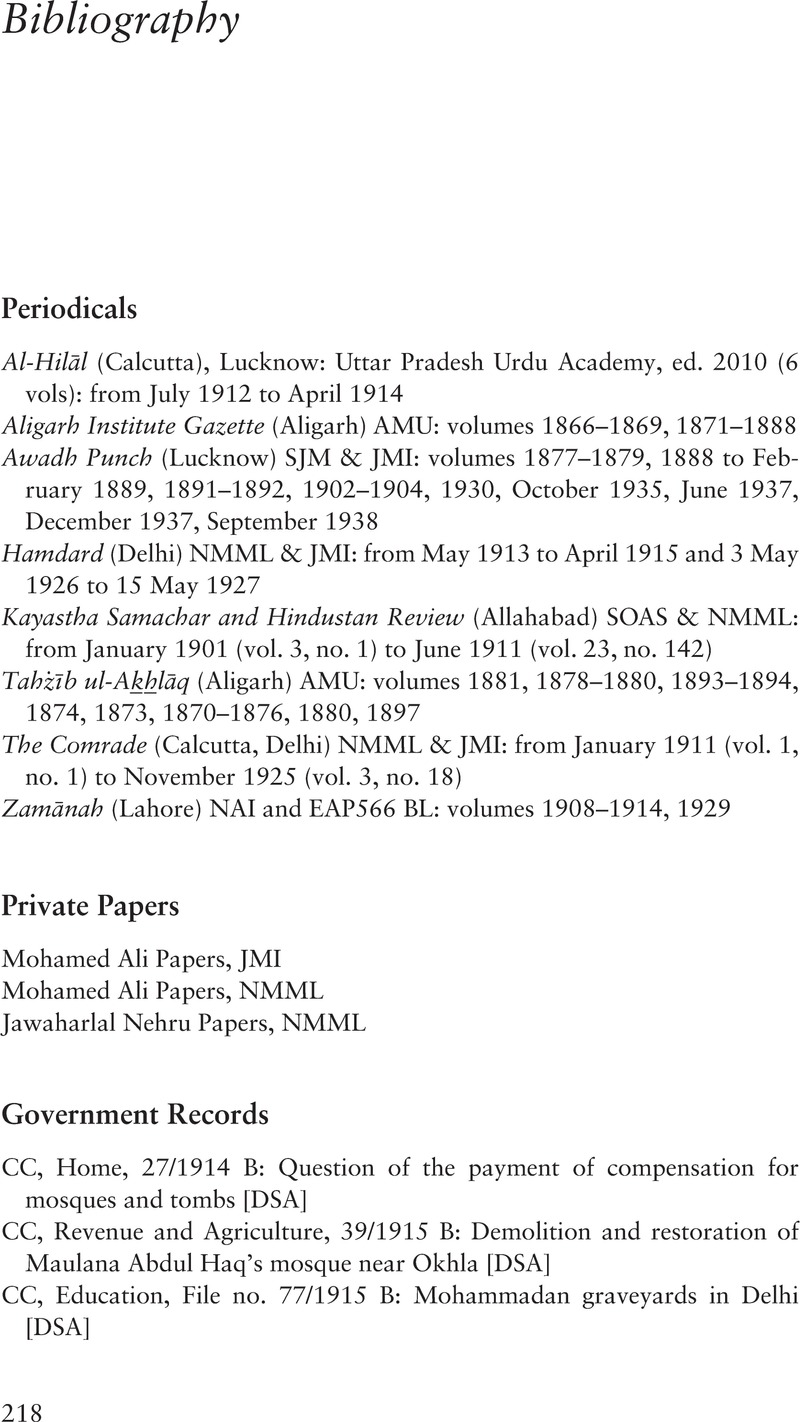Book contents
- Grief and the Shaping of Muslim Communities in north India, c. 1857–1940s
- Grief and the Shaping of Muslim Communities in north India, c. 1857–1940s
- Copyright page
- Contents
- Figures
- Acknowledgements
- Note on Transliteration
- Abbreviations
- Introduction
- 1 A Garden Lost
- 2 Useful Grief
- 3 Memorials, Feelings, and Public Recognition, c. 1911–1915
- 4 Empowering Grief
- 5 Nostalgia in Delhi
- Epilogue
- Glossary
- Bibliography
- Index
- References
Bibliography
Published online by Cambridge University Press: 03 March 2023
- Grief and the Shaping of Muslim Communities in north India, c. 1857–1940s
- Grief and the Shaping of Muslim Communities in north India, c. 1857–1940s
- Copyright page
- Contents
- Figures
- Acknowledgements
- Note on Transliteration
- Abbreviations
- Introduction
- 1 A Garden Lost
- 2 Useful Grief
- 3 Memorials, Feelings, and Public Recognition, c. 1911–1915
- 4 Empowering Grief
- 5 Nostalgia in Delhi
- Epilogue
- Glossary
- Bibliography
- Index
- References
Summary

- Type
- Chapter
- Information
- Publisher: Cambridge University PressPrint publication year: 2023

